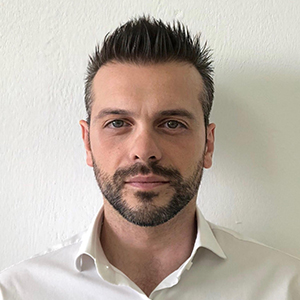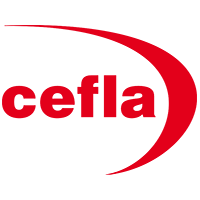
Interview with Leonardo Simone
Engineering Manager
Innovation for Cefla > BU Medical Equipment > Product innovation mercati
What projects are you carrying forward in the R&D sphere? What markets do we cover, and what are the characteristics of the products we aim to develop?
“In R&D we’re moving ahead with multiple projects, the core subject being Imaging.
The new extraoral platform will contain a series of sub-projects designed to plug any gaps with respect to the competition. For example, these regard the workflow of more aesthetics-related tasks, where we’re moving towards a patient Face-Scan solution that interfaces with CBCT (cone beam computed tomography). This will provide a more comprehensive overview ranging from skin to bone, giving patients a clear idea of what the final result will be.
This is a crucial topic, because digital tools will ensure work is not only better planned, but executed with greater precision.
Our work in this area also draws on what’s already available on the market. However, our experts seek to propose new solutions, such as by working on integration with new mobile devices (e.g. image capture from a mobile device to be able to form a match with 3D scans obtained with the CBCT).
The underlying method is one of continuous investigation: algorithms are constantly being improved and merged with AI-generated interactions.
Better workflow allows dentists, and healthcare professionals in general, to plan the various stages of work, identify critical points and highlight problems in a predictive manner to lay out a clear path towards the final result.
What we aim to provide is a massive improvement in product usability. This vital key will allow us to unlock new market shares, with a focus on new market segments, such as younger doctors who are already ‘digital natives’.
With Exalens, the latest addition to the Cefla family, we’re planning the future not only from a strictly technological perspective to ensure greater stability, but also by improving the user experience (i.e. for healthcare workers and the dealer’s installer by reducing the number of troubleshooting scenarios).
We are increasingly IoT-oriented: we already have a connection with the data harvested by machines, but we are not yet collecting it in a structured way. We could make use of digital twins to perform real-time monitoring of our machines worldwide, thus preventing faults and making corrections without interrupting user operations.
This approach creates an ecosystem that includes the various Product Lines of the Medical Equipment BU, not just in the Imaging sphere but also in Treatment and Sterilization: an ecosystem powered by a single software solution. For example, if a dentist buys an X-ray system, they’ll also be able to have tailor-made integrations with dental units or sterilization devices, thus broadening our market and taking us ever-closer to a world of services (along the lines of the Apple model) in a configuration unlike almost anything else on the market.
At the moment we’re doing in-depth studies on the requisites: development will follow, with release expected in the next months.
Exalens deals with user interfaces and the AI sphere, which will have to overlap with the instrumental part developed by our R&D department. This will lead to development of a layer that allows harmonisation of these different worlds through fully integrated Imaging, Sterilization and Treatment.
In parallel, we’re working on the design of the licensing website. The aim is to achieve complete de-materialisation and work towards a remote system that allows the sale of new services and additional packages. The outcome will be a connected practice with in-cloud services that offer a much faster, more user-friendly experience.”
How do you ensure you always look outward and stay updated on new technologies?
“This can be done in several ways: for example, by attending trade fairs, staying up to speed with scientific publications, acquiring companies that specialise in fields currently beyond our scope, and channelling everything into a structured database that can be used for research purposes.
For example, in Imaging we’re exploring new ways of reducing the dose given to the patient. A new member of personnel, in fact, will be entrusted with developing new algorithms. If the results are positive, we aim to industrialise these results, proposing new solutions that could also be patented.
We also have several joint-development partnerships with the Physics and Biomedicine departments of the University of Bologna.”
How did the merge with companies like Exalens and AdvanSid come about?
“Open, daily dialogue resulted in mergers that integrate existing skills with new ones. This was especially so with Exalens. More specifically, we’re working on the processes we use daily, ensuring we have a uniform set of tools with which to pursue goals. The outcome is the definition of shared working methods and tools, remote solutions included.”


